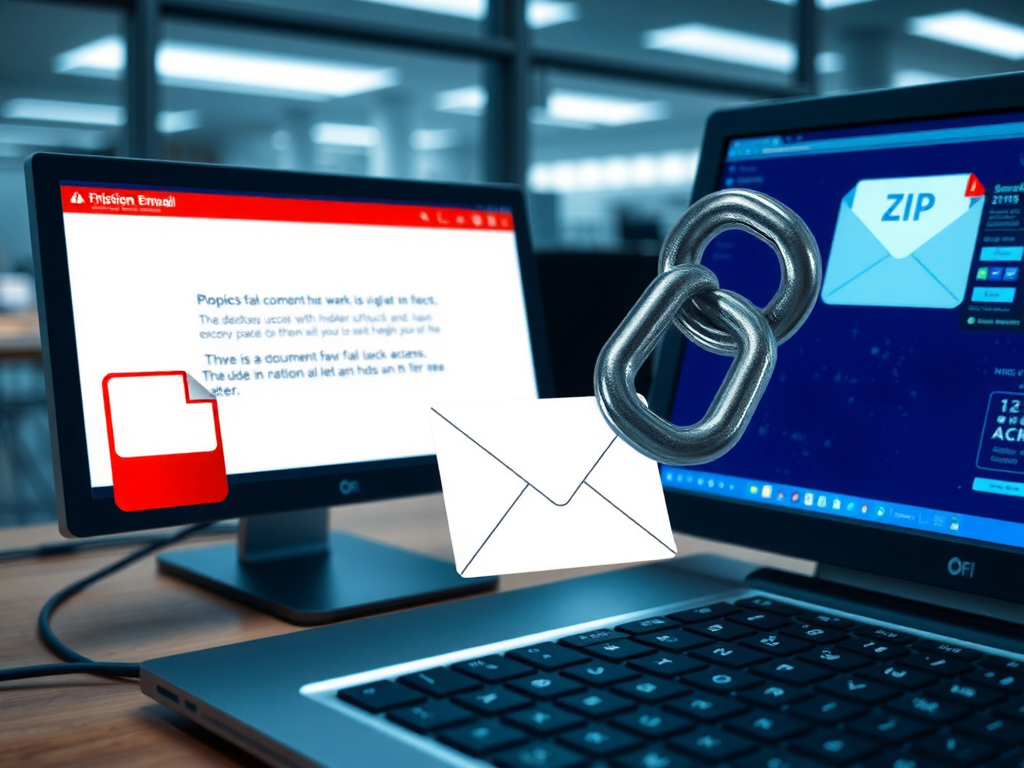Threat Report
Phishing Emails June 2025 A detailed report on the latest trends in phishing emails and their impact on cybersecurity.
Threat Overview
The June 2025 Trends Report on Phishing Emails, published by CyberHunter_NL on July 9th, 2025, provides an in-depth analysis of the latest trends in phishing attacks. This report is crucial for security analysts and organizations looking to understand the evolving landscape of cyber threats. The report has a confidence level of 100% and is considered completely reliable (Reliability: A).
Phishing emails continue to be one of the most prevalent and effective methods used by cybercriminals to gain unauthorized access to sensitive information. These attacks often involve deceptive emails that trick recipients into revealing personal data, clicking on malicious links, or downloading harmful attachments.
The report highlights various tactics employed by threat actors, including sophisticated social engineering techniques designed to bypass traditional security measures. The use of personalized and contextually relevant information in phishing emails has increased, making it more challenging for users to distinguish between legitimate and fraudulent communications.
Detailed Analysis
Phishing attacks have evolved significantly over the years, with threat actors employing increasingly sophisticated methods to evade detection and increase their success rates. The June 2025 Trends Report delves into the latest techniques used in phishing emails, providing valuable insights for security professionals.
One of the key trends identified in the report is the use of advanced social engineering tactics. Threat actors are leveraging publicly available information to craft highly personalized and convincing phishing emails. This approach makes it more difficult for users to identify potential threats, as the emails often appear to come from trusted sources.
Another notable trend is the increased use of automated tools and bots to launch large-scale phishing campaigns. These tools allow attackers to send out thousands of phishing emails in a short period, increasing their chances of success. Additionally, the report highlights the growing use of domain spoofing and email header manipulation techniques to make phishing emails appear more legitimate.
The report also discusses the impact of phishing attacks on various industries, including finance, healthcare, and government sectors. These industries are particularly vulnerable due to the sensitive nature of the information they handle. The report provides case studies and real-world examples to illustrate the potential consequences of successful phishing attacks.
Operational Security Measures
While the June 2025 Trends Report on Phishing Emails offers valuable insights into the latest trends, it also emphasizes the importance of implementing robust security measures. Organizations must adopt a multi-layered approach to protect against phishing attacks, including technical controls and user awareness training.
The report recommends the use of advanced email filtering solutions that can detect and block suspicious emails before they reach users’ inboxes. These solutions leverage machine learning algorithms and behavioral analysis to identify potential threats based on various indicators, such as sender reputation, content analysis, and link verification.
Additionally, organizations should implement strict access controls and multi-factor authentication (MFA) to prevent unauthorized access to sensitive information. MFA adds an extra layer of security by requiring users to provide additional verification beyond just a password, making it more difficult for attackers to gain access even if they obtain login credentials through phishing.
Recommendations for Mitigation
To mitigate the threat posed by phishing emails, organizations can implement several key measures:
- User Awareness Training: Provide regular training sessions to educate employees about the latest phishing techniques and best practices for identifying suspicious emails. This includes conducting simulated phishing exercises to test users’ awareness and response.
- Email Filtering Solutions: Deploy advanced email filtering solutions that can detect and block phishing attempts in real-time. These solutions should be regularly updated to address new threats and evolving tactics.
- Access Controls: Implement strict access controls and multi-factor authentication (MFA) to prevent unauthorized access to sensitive information. MFA adds an extra layer of security by requiring users to provide additional verification beyond just a password.
- Incident Response Plan: Develop and maintain an incident response plan that outlines the steps to be taken in case of a successful phishing attack. This includes containment, investigation, and recovery procedures to minimize the impact on the organization.
- Regular Updates: Keep all systems and software up to date with the latest security patches. Regular updates help address known vulnerabilities that can be exploited by phishing attacks.
- Monitoring and Analysis: Implement continuous monitoring and analysis of email traffic to detect and respond to potential threats quickly. This includes using intrusion detection systems (IDS) and security information and event management (SIEM) solutions.
By following these recommendations, organizations can significantly reduce the risk of falling victim to phishing attacks and protect their sensitive information from unauthorized access.
Conclusion
The June 2025 Trends Report on Phishing Emails provides a comprehensive overview of the latest trends in phishing attacks and offers valuable insights for security professionals. By understanding these trends and implementing robust security measures, organizations can better protect themselves against the evolving threat landscape.
For additional information, please refer to the following external references:
Please check the following page for additional information: ASEC Report Page


